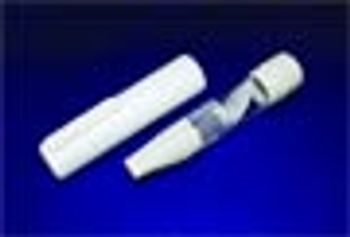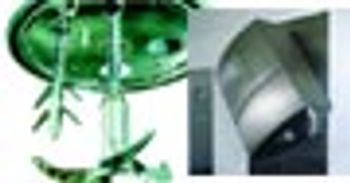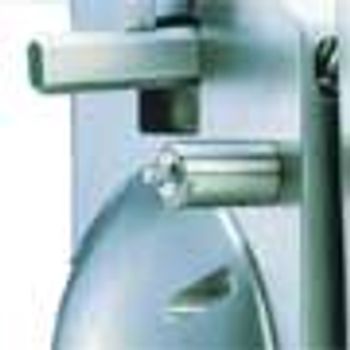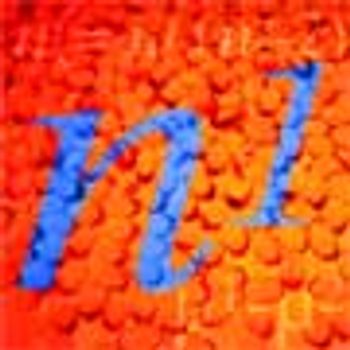
In spite of regulatory uncertainties, the industry continues to develop improved aseptic processing technologies.

In spite of regulatory uncertainties, the industry continues to develop improved aseptic processing technologies.

A new active dry powder inhaler has been developed using vibration frequencies to aerosolize powders.

Dry powder inhalers are a well-accepted dosage form for pulmonary drug delivery and a wide variety are either currently available or in development. This article examines a premetered, capsule-based multidose inhaler for which different qualities of a-lactose monohydrate were screened.

The bioavailability of some insoluble drugs is enhanced when they are dissolved in the solubilizing agent macrogol 400, although conventional hard capsules cannot tolerate the agent. This article investigates a PVA copolymer, which has been developed by the authors, examining its properties and its suitability as a material in capsule formulations.

The authors establish a quantitative framework for understanding the correlation between the segregation of pharmaceutical powders and various physical and process parameters.

This article describes the use of a one-pot processor for the cleaning and cleaning validation of two drug compounds - water-soluble theophylline and water-insoluble mebendazole. Both substances were produced using wet granulation and microwave drying, after which the processor was cleaned using its clean-in-place (CIP) system. Swab samples were taken from areas considered critical during processing and analysed for remains of active ingredient. It was concluded from the results that the processor's CIP system is capable of removing both moieties to a level well within accepted regulations.

The authors examine the development and performance of coprocessed excipients, including testing them for flowability, compressibility, amd dilution potential.

This article reflects on the challenges that predicting powder flowability currently pose to the pharmaceutical manufacturing industry and considers some of the benefits that can accrue when companies overcome these issues.

The use of solid dispersion technology to increase the bioavailability of poorly water-soluble drugs has always been limited by processing and scale-up difficulties. A new approach may help to overcome some of the problems.

FDA's aseptic processing draft guidance and the industry's state-of-the-art isolator technologies prepare manufacturers for the next generation of contamination control solutions.

The aim of this study was to validate the automated clean-in-place (CIP) system installed on a capsule filling machine to determine its ability to adequately eliminate contaminants. The results obtained from the proposed cleaning validation trial showed that all the soluble tracer was removed after the washing procedure. At the end of the CIP procedure, the discharged water had the same pH, phosphate content and total organic content as the supplied water. Lack of cross-contamination in the product was also demonstrated and a recovery trial highlighted the complete elimination of the tracer from the machine.

Single-use filtration technology is becoming increasingly popular as manufacturers seek to cut costs and minimize processing times.

Isolator technology can be used in clinical product formulation and filling facilities to ensure environmental control and reduce contamination risk in aseptic processing.

Biotech firms face new issues as FDA weighs policies to streamline generic-drug approvals and reduce patent disputes.

New research has led to significant advances in formulations and inhalation systems for pulmonary delivery.

Sterilizing grade filters are widely used in the biopharmaceutical industry and were once thought of as being perfect. However, these filters have experienced rapid developments and improvements during the last decade, which have resulted in enhanced thermal and mechanical resistance. Moreover, their performance levels have been raised, which has led to significant cost savings within production processes.

This article describes a method for assessing the similarity of dissolution profiles using Hotelling's T2 statistic. The method applies a covariance structure that accounts for the heterogeneity of variance and correlation across time points. Comparing the method with the f2 criterion recommended in FDA's guidance on dissolution testing, the performance of the two methods was assessed on real examples, and simulation studies were also done to compare the method's performance with that of the f2 criterion.

Transdermal drug delivery, a vital technology of increasing interest, offers such benefits as controlled delivery for as long as a week and improved patient convenience and compliance.

Members of FDA, industry, and academia formed a working group within PQRI to openly discuss topics from a scientific perspective and provide formalized clarifications and recommendations to FDA to be considered and incorporated into FDA's draft guidance on aseptic processing.

The authors describe the solicitation of industry input for the guidance through a process that included a 2002 meeting of the Advisory Committe on Pharmaceutical Science and the subsequent formation of the PQRI Aseptic Processing Working Group.

Training for aseptic processing cleanrooms must be a dynamic process to meet job requirements and industry demands. The author discusses various approaches that may be taken to ensure a successful training session.

Modern tablet production facilities are faced with two increasingly important, yet contradictory, demands - being able to handle more potent drugs and, at the same time, reduce costs. Additionally, batch sizes must become smaller and production planning more flexible. Until recently, these issues could only be dealt with individually and not as a whole; however, the exchangeable functional module (EFM) may provide a solution to this problem, as this article describes.

The authors provide a combined source of density data and show that denity can be used as an equipment-independent sclaing parameter in the manufacture of common pharmaceutical solids.

Oral dosage forms are the most popular way of taking medication, despite having some disadvantages compared with other methods. One such disadvantage is the risk of slow absorption of the active pharmaceutical ingredient (API), which can be overcome by administering the drug in liquid form and, therefore, possibly allowing the use of a lower dosage.

The recently issued FDA concept paper about aseptic processing shows how the current guidelines could be expanded and makes recommendations for alternatives to traditional cleanroom installations such as isolator-equipped aseptic filling lines and blow?fill?seal equipment.